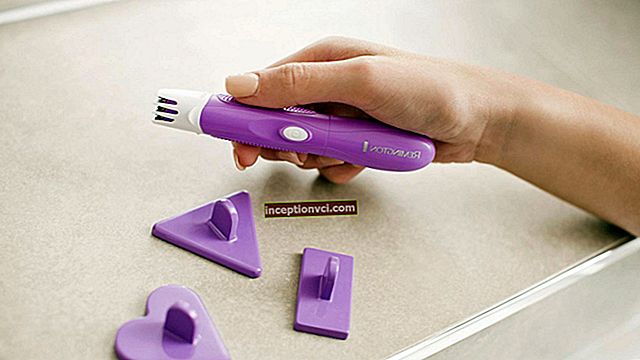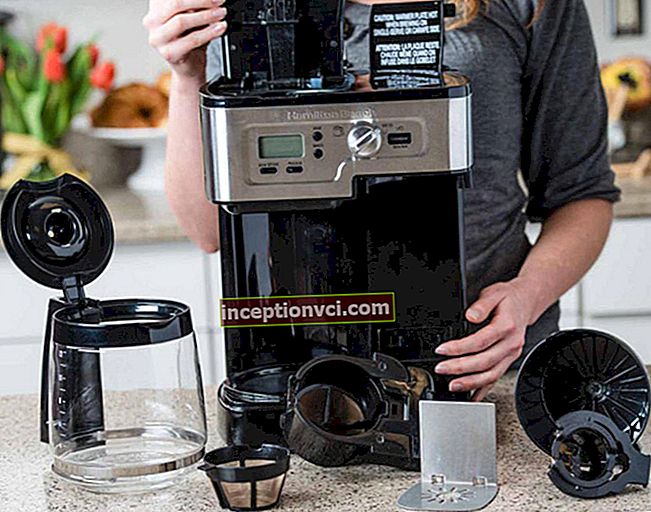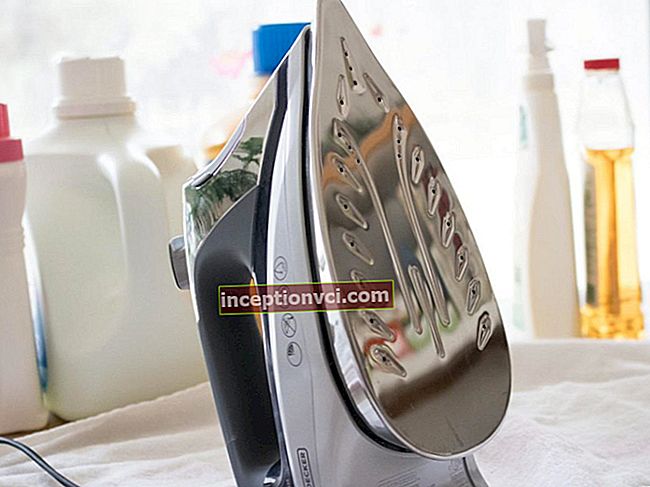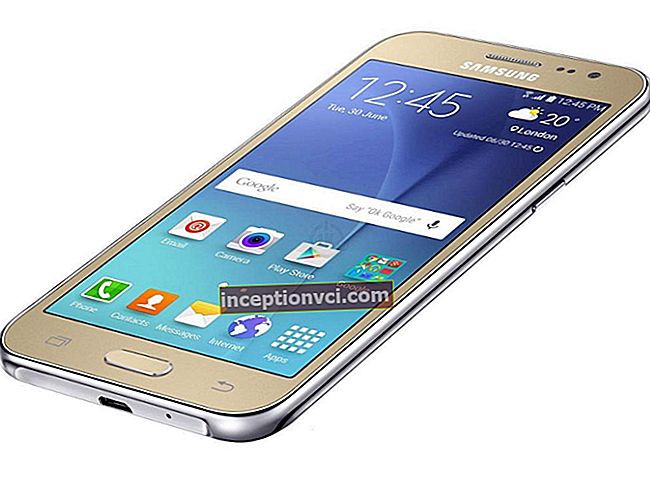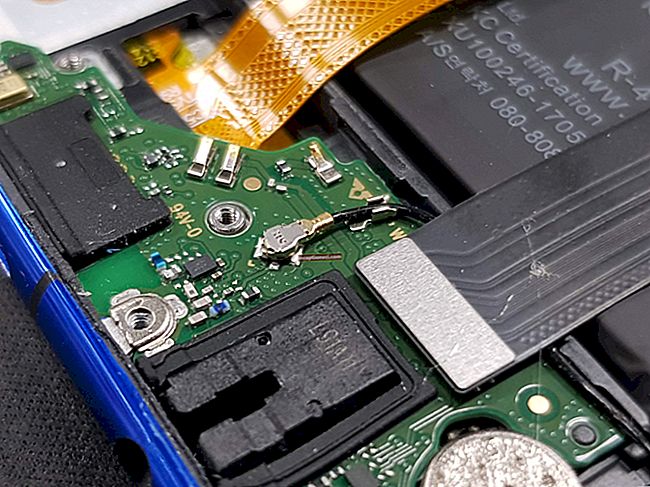In the mobile market, users are offered a wide range of low-cost smartphones. Some budget devices are distinguished by a thin body, some with a high-quality screen, and some with a rather powerful hardware platform. However, in pursuit of a thin body, large screen and powerful "stuffing", developers equip their devices with medium-capacity batteries, and users make claims to the battery life of their devices. Philips, taking into account the needs of users, produces smartphones that are able to work offline for a long time. One of these smartphones is the Philips Xenium W8510.
Equipment
The smartphone comes in a medium-sized white cardboard box. It shows the device from different angles and contains information about the technical characteristics and capabilities of the Philips Xenium W8510 in Russian. The smartphone is completed with a wired stereo headset, a warranty card, a user manual, an advertising brochure describing other models of the company, an interface cable, a protective film and a charger (1.2 amperes).

The complete headset is equipped with a remote control and a microphone. It demonstrates an average quality sound.
Design
Externally, Philips Xenium W8510 looks like a classic touchscreen smartphone. The body of the device is a rectangular monoblock with slightly convex upper and lower ends and rounded corners. The smartphone looks strict, but stylish.

The smartphone has average dimensions (69.7x138.5x10.4 millimeters) and weight (173 grams). The device does not set records in terms of compactness or thickness of the case, but it cannot be called bulky either. On the smartphone market, you can find many devices with more compact bodies, for example, the Alcatel OT Idol Ultra (67.5x133x7.9 mm) or the HTC One X (69.9x134.4x8.9 mm). However, they will be significantly inferior to the Philips smartphone in terms of autonomy.
The Philips Xenium W8510 case is completely made of matte plastic. The material of the back surface of the device is non-slip to the touch, so the user does not have to fear that the device will slip out of his hands. The "back" of the device is very easily soiled. It quickly becomes covered with fingerprints, which can be easily wiped off with a microfiber cloth.

The smartphone fits well in the hand, it is very convenient to use it.

The screen of the device is covered with glass (not Gorilla Glass). The entire front panel is edged with a metal frame, which adds variety to the appearance of the device. The frame protrudes slightly above the surface of the front panel, protecting the screen from damage.
The smartphone is assembled with high quality. When pressure is applied to the case, nothing squeaks or backlash. There are no gaps between structural elements. The device looks solid and reliable.
Buttons and connectors
On the top edge of the Philips Xenium W8510 there are an audio-out hole, a power key and a microUSB port. At the bottom you can find only a microphone hole.

Above the display on the front panel of the device are the developer's logo, a slot for the earpiece, light and distance sensors, and an LED indicator. The interlocutor's speech in the conversational dynamics is heard clearly and loudly. When the smartphone battery is low, the indicator light flashes red. During charging, it glows orange, and when the battery reaches 100% and when a missed event (missed call, new message) appears, it glows green.

Below the screen you can see three standard touch buttons - "Back", "Home" and "Menu". They have white backlighting.
The upper part of the "back" of the smartphone is removable. Under it are compartments for a memory card and a SIM card. The cover is firmly attached to the body. In order to remove it, you need to make an effort.The battery compartment is located under the bottom of the rear panel. You cannot access it.

On the detachable part of the back panel of the smartphone there is a single-section LED flash, the main camera lens and the inscription “8.0 MP” (camera resolution) inscribed in white paint. The company logo is located in the center of the rear panel, and the main speaker is located in the lower left part of the "back", which demonstrates a loud, but inexpressive sound.
On the right side panel of the device, you can see two separate round metal volume buttons, and on the left there is the same round key, which is a switch for the energy-saving mode.

Screen
Philips Xenium W8510 has a high-quality touch screen with a diagonal of 4.7 inches and a resolution of 720x1280 pixels (HD) with a density of 312 pixels per inch. The physical dimensions of the smartphone display are 58x103 millimeters.
The device screen is made using IPS-LCD technology. It is responsive to user touch. There is support for 10 simultaneous touches.
In the development of the display, the OGS (One Glass Solution) technology was used, which provides for the location of the protective glass directly on the matrix without an air gap.

The picture on the screen looks clear and bright. There is no image distortion when changing the viewing angle.
When working with the device indoors, the brightness of the screen is quite sufficient, but outdoors on a bright sunny day, the image on the display fades, and it becomes difficult to distinguish it.
The brightness of the screen can be adjusted manually or automatically by the light sensor.
Performance
The Philips Xenium W8510 is powered by the MediaTek MT6589 processor, developed using a 28nm process technology. The platform is based on four ARM Cortex-A7 rev2 cores. The minimum clock frequency of their operation is 497 megahertz, and the maximum is 1.2 gigahertz. The platform was developed using the ARM TrustZone advanced security technology, which is a set of instructions that help secure mobile devices, content transfers and mobile payments. The smartphone is equipped with a PowerVR SGX 544MP graphics core, clocked at 286 megahertz.
The main advantage of this hardware platform is energy efficiency. The device's processor consumption is 398 milliwatts. You can comfortably play most mobile games on your smartphone, for example, Dead Trigger and Need for Speed Shift, at maximum settings. More demanding games such as Real Racing 3, GTA: VC, Dead Trigger 2 and Asphalt 8 can also be played on the device, but with minimal graphics settings.
In benchmarks, the device demonstrates performance typical for smartphones based on MT6589. In AnTuTu Benchmark, the device scores 13506 points, in Vellamo - 449 points, slightly inferior to the Samsung Galaxy S III. The result of the smartphone in Epic Citadel in Ultra High Quality mode was 23.4 frames per second.

The device works quickly. Loading web pages, launching applications, switching between open programs and games - everything happens without any hiccups or slowdowns.
The volume of RAM Philips Xenium W8510 is 1 gigabyte, and the capacity of the internal data storage is 4 gigabytes, of which about 2 gigabytes are left for the user to store personal data. There is a slot for a microSD memory card with a capacity of up to 64 gigabytes.
Autonomy
The capacity of the built-in lithium-ion microSD battery up to 64 Philips Xenium W8510 is 3300 milliampere-hours. According to the manufacturer, in the talk mode the device can last about 18 hours without recharging, and in the standby mode - about 860 hours.
On a single battery charge, the device can work in continuous music playback mode for about 65 hours, in HD video playback mode at maximum screen brightness and maximum volume - almost 10 hours. In continuous play mode, the battery life of the smartphone will be about 4 hours. In the mode of reading a book at 40% screen brightness with the Wi-Fi module turned on, the device battery will be discharged after about 18 hours.
The time to fully charge the Philips Xenium W8510 battery from the supplied power supply is 3-3.5 hours, and from the USB port - about 7 hours.
To increase the battery life of the device, you can activate the energy-saving mode. You can enable it both in the settings of the device and by means of the hardware button on the left side of the case.When the energy-saving mode is activated, the brightness of the display decreases, the time of the backlight operating before going into "sleep" mode decreases, the wireless modules (Wi-Fi, Bluetooth, GPS) and data transfer are turned off, and all running applications are closed. The user can configure his own power saving mode by setting the minimum comfortable level of the screen backlight and specifying which of the wireless modules should be left active.

In the active mode of the device, it will be able to work on a single battery charge for about 3 days, and with the power saving mode on - about 5-6 days.
Communication capabilities
Philips Xenium W8510 supports dual SIM. There is only one radio module in the smartphone, so during a telephone conversation on one SIM card, the second will be blocked. In the menu item "SIM-cards management" the user can set the colors of the SIM-cards, names and configure the data transfer.
The communicator operates in 2G networks (GSM / GPRS / EDGE at 900/1800/1900 megahertz) and 3G (900/2100 megahertz). The data transfer rate in the HSUPA network is capable of reaching 5.76 megabits per second, and in the HSDPA network - 21 megabits per second.
Thanks to the presence of a Bluetooth 4.0 module with support for A2DP, FTP and HFP profiles, you can connect a wireless headset to your smartphone for voice transmission, and you can also connect compatible devices for file exchange.
The device has a Wi-Fi IEEE 802.11 b / g / n wireless module. The smartphone can be used as a modem or access point (Wi-Fi Hotspot).
USB 2.0 is used to synchronize the device with a personal computer. The USB OTG interface is not supported, so it is impossible to connect an external flash drive to the device.
There is no NFC module, as well as support for fourth-generation networks, in the smartphone.
Camera
The main camera Philips Xenium W8510 has a resolution of 8 megapixels. The aperture of the camera lens is F2.4 and the focal length is 35 millimeters. There is a LED flash.
The maximum resolution of photos that the rear camera of the device can take is 3264x2448 pixels, and for videos - 1920x1080 pixels with a frequency of 30 frames per second.

The following shooting modes are available in the camera settings: HDR (high dynamic range), panorama, burst shooting, "pretty face", subject shooting mode from different angles, smile detection.
Focusing works both in automatic shooting mode and in manual mode. The user can adjust the sharpness of photos, saturation parameters, brightness, contrast, tints, exposure level (from -3 to +3), sensitivity value (100 - 1600 ISO units), white balance. ZSD mode and anti-flicker function are also present. You can apply a variety of color effects to your pictures. When shooting video, you can activate the electronic stabilization system.

The camera of the device demonstrates photos of good quality, but one can make claims to the small dynamic range. Videos are clear, detailed, without "smears" and "artifacts".
The resolution of the front camera of the smartphone is 2 megapixels.
Software
Philips Xenium W8510 operates under the control of the "bare" operating system Android 4.2.2 without any settings from the manufacturer of the device.
The lock screen displays the date, time and various missed events (if any). If you touch the lock icon and hold your finger on it for a while, a vertical menu opens, through which you can launch the camera, get to the message folder or go to the call log.
A total of 5 desktops are available to the user. Their number cannot be changed. At the top of the screen there is a service line, where you can see notifications and application updates, time, battery power, and the like. You can learn more about the notifications on the panel that slides out of the service line.The same panel contains switches for some functions. Here you can disable or enable wireless modules, auto-rotate the screen, data transfer, flight mode, sleep timer, change the sound profile and screen brightness with one "click".

The phone book contains a vertical list of contacts from the smartphone's memory, social networks, in which the owner of the device has an account, and from two SIM cards. Contacts are sorted by name. You can search by Russian letters. At the top of the phone book are the Favorites and Groups tabs. The first tab adds the recipients to whom the user most often calls or who call the user most often. The owner of the device can combine contacts into groups for more convenient communication, for example, you can quickly send a message to all recipients from one group or arrange an audio conference with them.
In the call history, you can view calls in a general list or display data about calls from only one of the SIM cards.
Among the software preinstalled in Philips Xenium W8510, it is worth highlighting the Kingston Office package, designed for creating, editing and viewing office documents (texts, tables, presentations).
The device comes with the popular TouchPal keyboard, which supports stroke typing, typo correction, word prediction, and many different themes.
The standard music player, familiar to many users from other Android devices, is equipped with an equalizer with the possibility of individual adjustment and ready-made presets (dance, folklore, classical and others). User customization of the sound is carried out using a five-band equalizer with a range of 60 hertz - 16 kHz.
The audio player is capable of playing audio files of AAC, eAAC +, MP3, AAC +, WMA formats. Music compositions can be sorted according to several criteria. During listening, the track can be set as a ringtone for one of the SIM cards.
All pictures, photos and videos that are in the internal memory of the device or on a memory card can be viewed in the gallery. The application loads quickly. Any image can be attached to a contact from the phone book, set as a background image of the lock screen or desktop, transferred to another device, or sent to a social network.
The power of the hardware "stuffing" of the device is enough for normal FullHD video playback. Unfortunately, the standard video player does not play many video file formats correctly (either without sound or without a picture). To solve this problem, the owner of the device will need to install a third-party video player, for example, MX Player.
You can watch videos online on YouTube video hosting using the application of the same name. It works in full screen mode. You can search among the videos.
The smartphone has an FM radio, which today is not found in every flagship. The radio receiver works in the ranges 87.5-108 megahertz. The stations they like are saved in cells, then the user can switch between them. The radio works only with headphones connected, which play the role of an antenna for receiving a signal, but you can also listen to the radio through the speaker. You can record radio broadcasts in your smartphone's memory.
If we talk about organizer applications, then the device has a calculator, a program "Task" and a notebook "Notebook".

You can sort, rename, move, delete and copy any files that are in the device's memory without installing third-party applications. The preinstalled file manager handles all these functions without any problems.
The smartphone has applications designed for social communication - Google talk chat and Facebook social client.
The Google Maps application allows the smartphone owner to quickly navigate the terrain.The program allows you to determine the user's location and plot a route from one point to another. The route can be adjusted depending on the mode of travel (public transport, on foot, by car). Google Maps shows public transport routes, estimated arrival times, transfer points, and the like.
Pages load quickly in a standard web browser and zoom smoothly. The browser is ideal for comfortable web surfing.
In addition to the official Google Play app store, device users have access to a Philips branded store called Xenium Club. It does not have a very large assortment of programs and games, most of which are paid.

Output
The Philips Xenium W8510 is the ideal work tool with an ergonomic body and austere design. Of course, the main advantage of the device is its long battery life. The developers have achieved this result thanks to the introduction of a capacious battery and the corresponding software.
The advantages of the device include a high-quality screen with high resolution, wide viewing angles, bright and saturated colors.
Philips Xenium W8510 has a powerful hardware platform that is powerful enough for most applications.
This smartphone is not suitable for gamers, music lovers and users who love everything original and bright. But it will become an ideal device for busy business people, as well as for those who travel frequently and do not want to "depend on the outlet."
Philips Xenium W8510 is a solid device with a high level of performance, a capacious battery, a high-quality display and an inexpensive cost.
